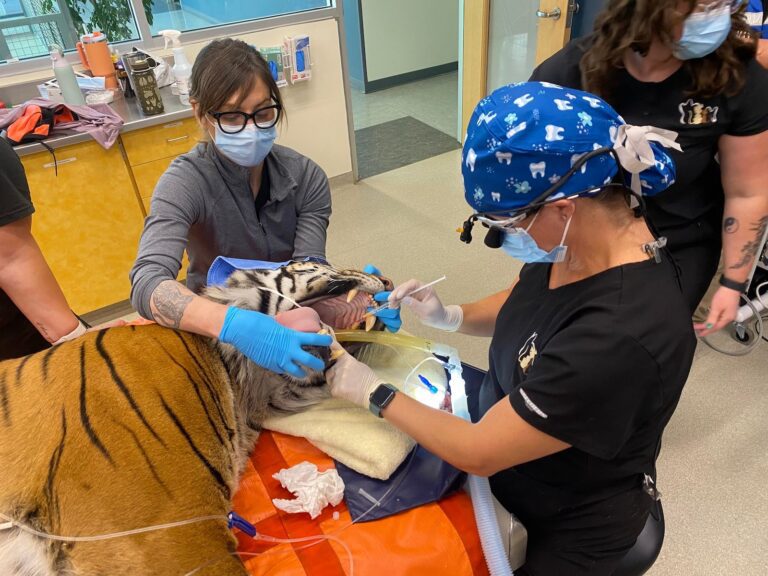Photo courtesy of the Cincinnati Zoo
Two big cats at the Cincinnati Zoo in Ohio were discovered with dental problems that required root canals to save their teeth.1 An 8-year-old Malaysian tiger named Zero and a 5-year-old cheetah named Barafu both needed root canals after physical exams by veterinarians at the Cincinnati Zoo and Botanical Garden.
Dental procedures were performed by Jamie Berning, DVM, DAVDC, a veterinary dentist at Veterinary Dentistry and Oral Surgery of Ohio in Columbus. Barafu the cheetah needed 2 extractions in addition to the root canal and Zero the Malayan tiger needed root canals on 2 canine teeth.1
“We observed fractures and pulp exposure. In humans, you would do a root canal to repair it, and the procedure for big cats is similar,” Jessica Heinz, DVM, Cincinnati Zoo veterinarian, said in a news release.1 “We have worked with Dr. Berning in the past and were thrilled that she agreed to help Zero and Barafu.”
A 2023 study published in Journal of Veterinary Dentistry dental and oral pathologies of large cats were evaluated.2 Looking at lions and tigers in particular, the study was inspired by a marked increase in the occurrence of dental disease in captive big cats in recent decades. The researchers performed oral examinations on 36 animals, 8 of which were presented specifically for oral examination and the rest were examined under anesthesia for unrelated, medically necessary procedures.
Of the 28 cats that underwent routine oral examinations with no previously reported dental conditions, pathological changes not previously noted were found in 19 of them. The study reported dentoalveolar trauma, such as tooth fractures and abrasions, were most commonly diagnosed in 24 of the 36 cats. The researchers concluded that the findings suggest a link between housing conditions and dental disease in big cats, also emphasizing the importance of regular oral examinations.2
“Dental health is a major contributor to longevity, and we hope these procedures will extend the lives of these animals and improve their quality of life,” Heinz said.1 “Both cats recovered quite well after the operation and are back to their normal habits.”
Visitors can find Zero at the zoo, although Barafu inhabits the breeding facilities outside the zoo, contributing to the endangered cheetah population. The global cheetah population has declined from 100,000 in 1900 to 7,000 today.1 Similarly, Malayan tigers are considered a critically endangered species, with reports that there are now fewer than 150 Malayan tigers in the wild.3
References
- Cincinnati Zoo Veterinarians Discover Tiger and Cheetah Dental Problems. Press release. Cincinnati Zoo. 9 August 2024. Accessed 16 August 2024. https://cincinnatizoo.org/cincinnati-zoo-vets-get-to-the-root-of-tiger-and-cheetah-dental-problems/
- Kopp E, Stelzer P, Lendl C, Meyer-Lindenberg A, Fahrenkrug P. Evaluation of Dental and Oral Pathologies of 36 Captive Lions (Panthera leo) and Tigers (Panthera Tigris). J Vet Dent. 2023;40(4):314-328. doi:10.1177/08987564231159805
- The Malayan Tiger Project. WWF. Accessed 16 August 2024.


